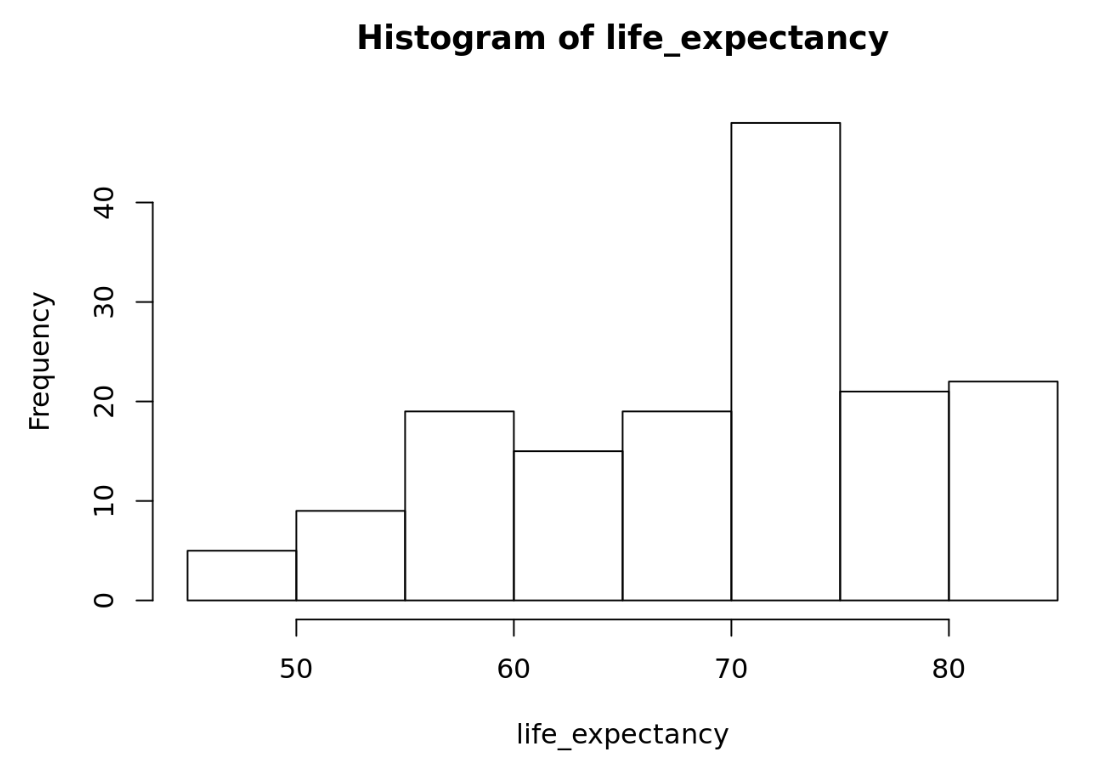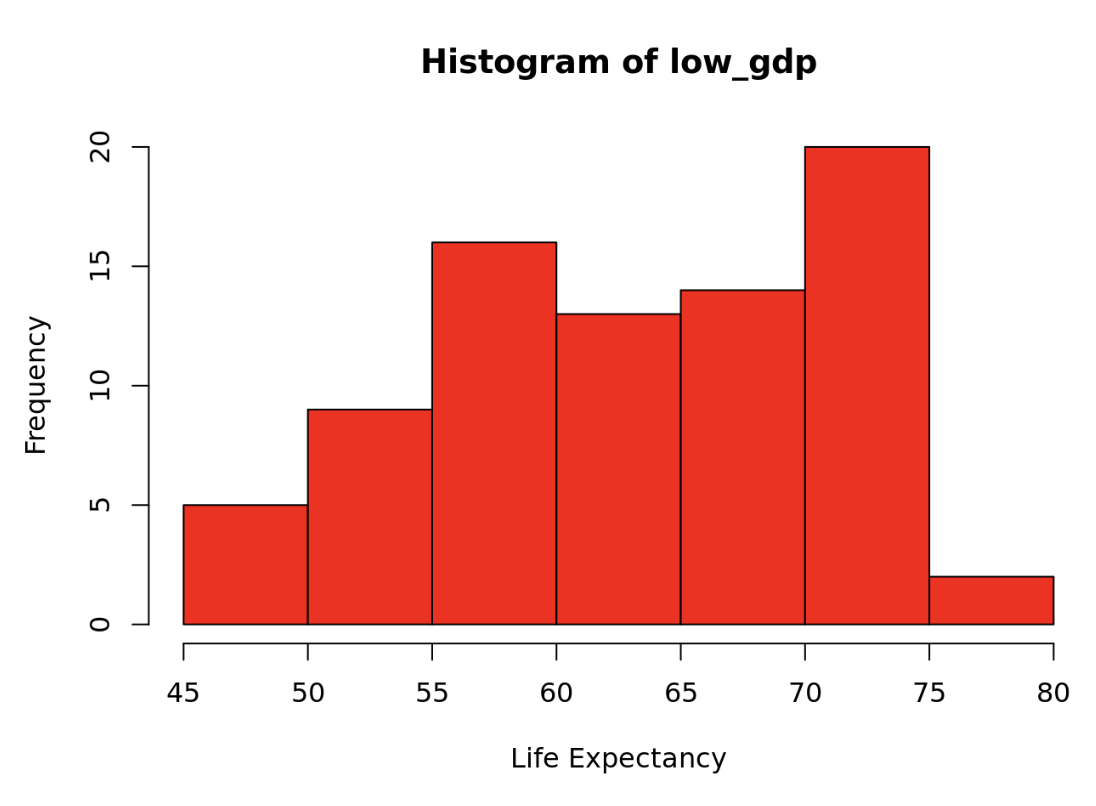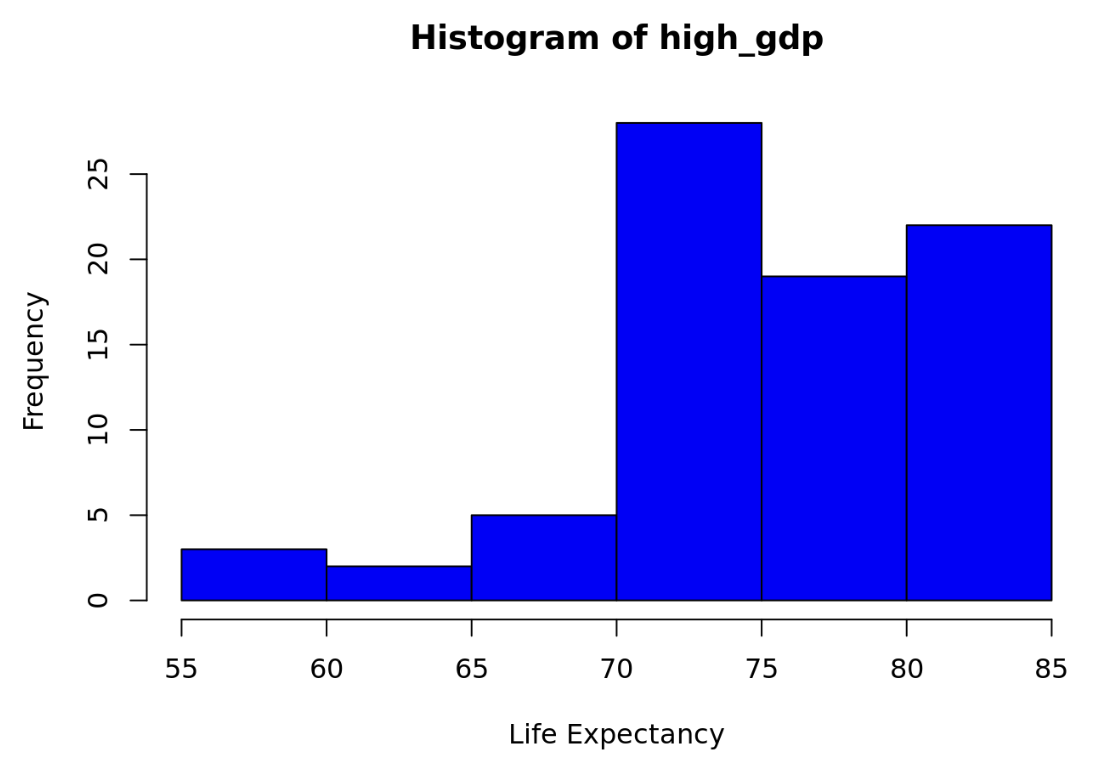Life Expectancy Project
Over the course of the past few centuries, technological and medical advancements have helped increase the life expectancy of humans. However, as of now, the average life expectancy of humans varies depending on what country you live in.
In this project, I will investigate a dataset containing information about the average life expectancy in 158 different countries. I will specifically look at how a country’s economic success might impact the life expectancy in that area.
Project Hypothesis
My hypothesis is that there will be a positive correlation between a country's economic success and the life expectancy.
Project Method
Import Libraries
Import the necessary libraries for data analysis and visualisation.
```{r message=FALSE, warning=FALSE, error=TRUE}
# load packages
library(ggplot2)
library(readr)
library(dplyr)
```
Data Inspection
Look at the head of the dataset to have an idea of the information the dataset give you.
```{r error=TRUE}
# import and inspect data
data <- read_csv("country_data.csv")
head(data)
```

Life Expectancy Analysis
Find the quartiles of the data in order to get an idea of how the data is spread.
```{r error=TRUE}
# life expectancy
life_expectancy <- data %>% pull(life_expectancy)
# life expectancy quartiles
life_expectancy_quartiles <- quantile(life_expectancy, c(0.25, 0.5, 0.75))
print(life_expectancy_quartiles)
```

From the quartiles, we can see that the median life expectancy is 72.52 years, with the first quartile being 62.33 years and the third quartile being 75.44 years.
This means that 50% of countries have a life expectancy between 62.33 and 75.44 years.
Next, I will create a histogram to visualise the distribution of life expectancy across countries.
```{r error=TRUE}
# plot histogram of life expectancy
hist(life_expectancy)
```

The histogram shows that the life expectancy is right-skewed, with a majority of countries having a life expectancy between 60 and 80 years.
GDP Data Analysis
Next, I will look at the GDP data to see how it is distributed.
First I shall split the data into two groups, the low GDP which are the countries that are less than or equal to the median and the high GDP which are the countries greater than the median.
In order to do this I must first find the median.
```{r error=TRUE}
# gdp
gdp <- data %>% pull(GDP)
head(gdp)
# median gdp
median_gdp <- median(gdp)
print(median_gdp)
```

The median GDP is 2938.078.
Now I can split the data into two groups, the low GDP and high GDP.
I shall first look at the low GDP and find the quartiles of that data.
```{r error=TRUE}
# low gdp
low_gdp <- data %>% filter(GDP <= median_gdp) %>% pull(life_expectancy)
# low gdp quartiles
low_gdp_quartiles <- quantile(low_gdp, c(0.25, 0.5, 0.75))
print(low_gdp_quartiles)
```

Now I shall look at the high GDP and find the quartiles of that data.
```{r error=TRUE}
# high gdp
high_gdp <- data %>% filter(GDP > median_gdp) %>% pull(life_expectancy)
# high gdp quartiles
high_gdp_quartiles <- quantile(high_gdp, c(0.25, 0.5, 0.75))
print(high_gdp_quartiles)
```

From the quartiles, we can see that the median life expectancy for low GDP countries is 64.34 years, with the first quartile being 56.34 years and the third quartile being 71.74 years.
For high GDP countries, the median life expectancy is 75.16 years, with the first quartile being 72.97 years and the third quartile being 80.52 years.
This means that 50% of low GDP countries have a life expectancy between 56.34 and 71.74 years, while 50% of high GDP countries have a life expectancy between 72.97 and 80.52 years.
Next, I will create histograms to visualise the distribution of life expectancy for both low and high GDP countries.
# plot low gdp histogram
hist(low_gdp, xlab="Life Expectancy", col='red')
# plot high gdp histogram
hist(high_gdp, xlab="Life Expectancy", col='blue')
```


The histograms show that the life expectancy for low GDP countries is slightly left-skewed skewed, however the life expectancy for high GDP countries is very left-skewed, with a majority of countries having a life expectancy between 70 and 85 years.
Conclusion
In conclusion, my hypothesis was correct. There is a positive correlation between a country's economic success and the life expectancy.
From the data analysis, we can see that high GDP countries have a significantly higher life expectancy than low GDP countries.
This suggests that economic success plays a crucial role in determining the quality of healthcare, nutrition, and overall living conditions, which in turn impacts life expectancy.
